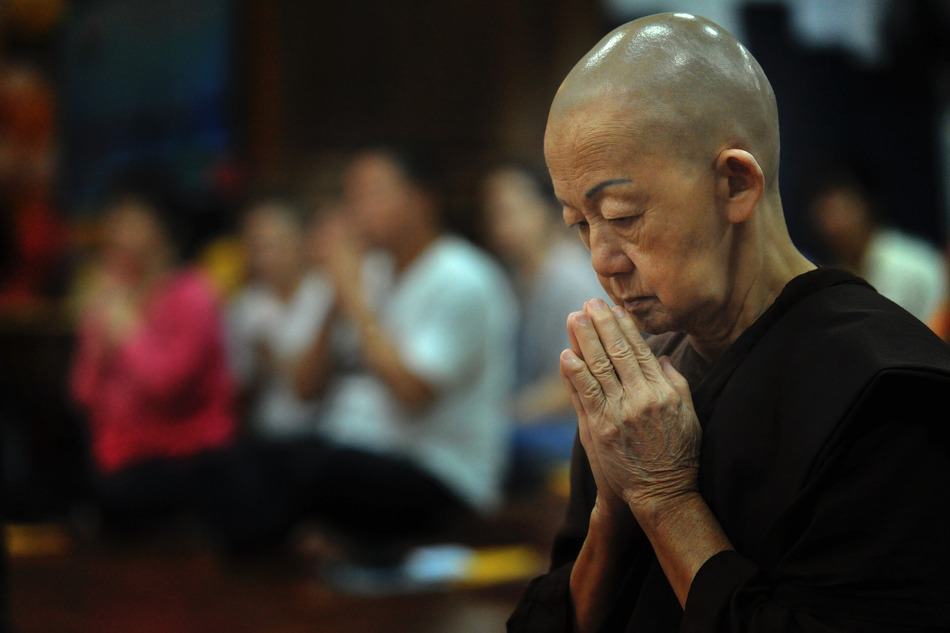There is a lot of debate in the meditation world about the Theravada vs Insight Meditation movement. What’s the difference? Which one is better? In this article, I will explore the differences between these two movements and help you decide which one is right for you!
Theravada is the oldest school of Buddhism, and it focuses on the Pali Canon. Theravada Buddhists aim to follow the path of the historical Buddha, Siddhartha Gautama while Insight Meditation is a relatively new movement. It emphasizes mindfulness and meditation practices that are designed to help people see things as they are.
What Is Theravada?
Theravada is the oldest surviving Buddhist school. It was founded in India in the third century BCE and later spread to Southeast Asia. Theravada means “the Way of the Elders” or “the Ancient Teaching.”

Theravada teaches that all beings have the potential to become Buddhas, but that it takes many lifetimes of effort to reach this goal. The Theravada canon includes both Pali scriptures (which are shared with other schools of Buddhism) and later works composed in Sinhala, Thai, and Burmese.
What Is The Insight Meditation Movement?
The Insight Meditation Movement is a recent development within Theravada Buddhism. It emphasizes mindfulness meditation as a path to liberation from suffering. The movement was founded in the 20th century by Theravada teachers such as Mahasi Sayadaw and U Ba Khin and has been popularized in the West by teachers such as Joseph Goldstein and Jack Kornfield.
While Theravada and the Insight Meditation Movement share many commonalities, there are also some important differences.
- Theravada is focused on individual liberation, while the Insight Meditation Movement emphasizes social engagement and activism.
- Theravada teaches that all beings have the potential to become Buddhas, but that it takes many lifetimes of effort to reach this goal. In contrast, the Insight Meditation Movement teaches that every being already possesses Buddha nature and that enlightenment is possible in this lifetime.
- Finally, Theravada is focused on the study of scriptures and intellectual understanding, while the Insight Meditation Movement emphasizes direct experience and personal practice.
Which Path Is Right For You?
Both Theravada and the Insight Meditation Movement offer valid paths to liberation from suffering. The best way to decide which path is right for you is to explore both traditions and see which one resonates more with your values and experiences.
If you are looking for a path that emphasizes individual effort and achievement, Theravada may be a good fit for you. If you are looking for a path that emphasizes social engagement and activism, the Insight Meditation Movement may be a better fit. And if you are interested in exploring both intellectual understanding and direct experience, both traditions can offer valuable insights.
Whichever path you choose, the most important thing is to commit to your practice and explore it deeply. By doing so, you will be sure to find your way to liberation.
The Differences
So, what’s the difference between these two approaches to Buddhism? Let’s take a closer look:
- It is focused on following the teachings of Siddhartha Gautama, while Insight Meditation is more concerned with developing mindfulness and understanding reality as it truly is.
- Theravada Buddhists believe that nirvana can only be attained by monks and nuns who have dedicated their lives to the practice, while Insight Meditation practitioners believe that anyone can achieve nirvana through mindfulness and meditation.
- It is focused on the Pali Canon, while Insight Meditation is not as concerned with scriptures and texts.
So, which one is right for you? If you’re looking for a more traditional approach to Buddhism, Theravada may be the way to go. If you’re interested in developing mindfulness and understanding reality as it truly is, Insight Meditation might be a better fit. Ultimately, the decision is up to you! Experiment with both approaches and see what works best for you.
Benefits Of Theravada
The Theravada tradition is the oldest form of Buddhism, and for many practitioners, it is the purest form of the religion. Theravada means “the way of the elders” in Pali, the language of Theravada scriptures. This branch is conservative in its practices and beliefs, adhering closest to the original teachings of Siddhartha Gautama Buddha. There are many benefits to practicing Theravada Buddhism.

- One benefit is that it helps individuals develop a strong foundation in Buddhist principles and practices.
- Theravada also provides a clear path to enlightenment, which can be difficult to find in other forms of Buddhism.
- In addition, Theravada teaches individuals how to live in the present moment and enjoy the simple things in life.
If you are looking for a branch of Buddhism that is traditional and provides a clear path to enlightenment, Theravada may be the right choice for you. Theravada can help you develop a strong foundation in Buddhist principles and provide guidance on how to live in the present moment. Give Theravada a try today! You may find it is the perfect fit for your spiritual needs.
Some other benefits of Theravada include:
- It teaches individuals how to live peacefully and harmoniously with others.
- With its help, individuals develop compassion and empathy for all beings.
- It encourages individuals to lead ethical and moral lives.
- Promotes mental and physical well-being.
- It provides a sense of community and support.
What Does This Mean?
So, what does this all mean for you? If you’re looking to focus on your personal development, Theravada may be the better option for you. However, if you’re interested in developing a strong sense of community and helping others, the Insight Meditation Movement may be a better fit.
Of course, there’s no wrong choice here – ultimately it comes down to what you’re looking to get out of your meditation practice. So, take some time to consider your goals and choose the path that feels right for you.
So, there you have it – a brief overview of the Theravada vs Insight Meditation Movement debate. Hopefully, this has helped you better understand the two approaches and decide which one is right for you. Thanks for reading!
Bottom Line
So, what’s the difference between Theravada and Insight Meditation Movement? Theravada is more focused on the individual, while Insight Meditation Movement is more community-based. Theravada also has a more structured approach to meditation, while Insight Meditation Movement is more flexible. Ultimately, it’s up to you to decide which tradition is right for you. Try out both and see what works best for you! Happy meditating! What are your thoughts on Theravada vs Insight Meditation Movement? Let me know in the comments below! And be sure to check out my blog posts on meditation and mindfulness for more tips and advice. Thanks for reading!
You May Also Like:

